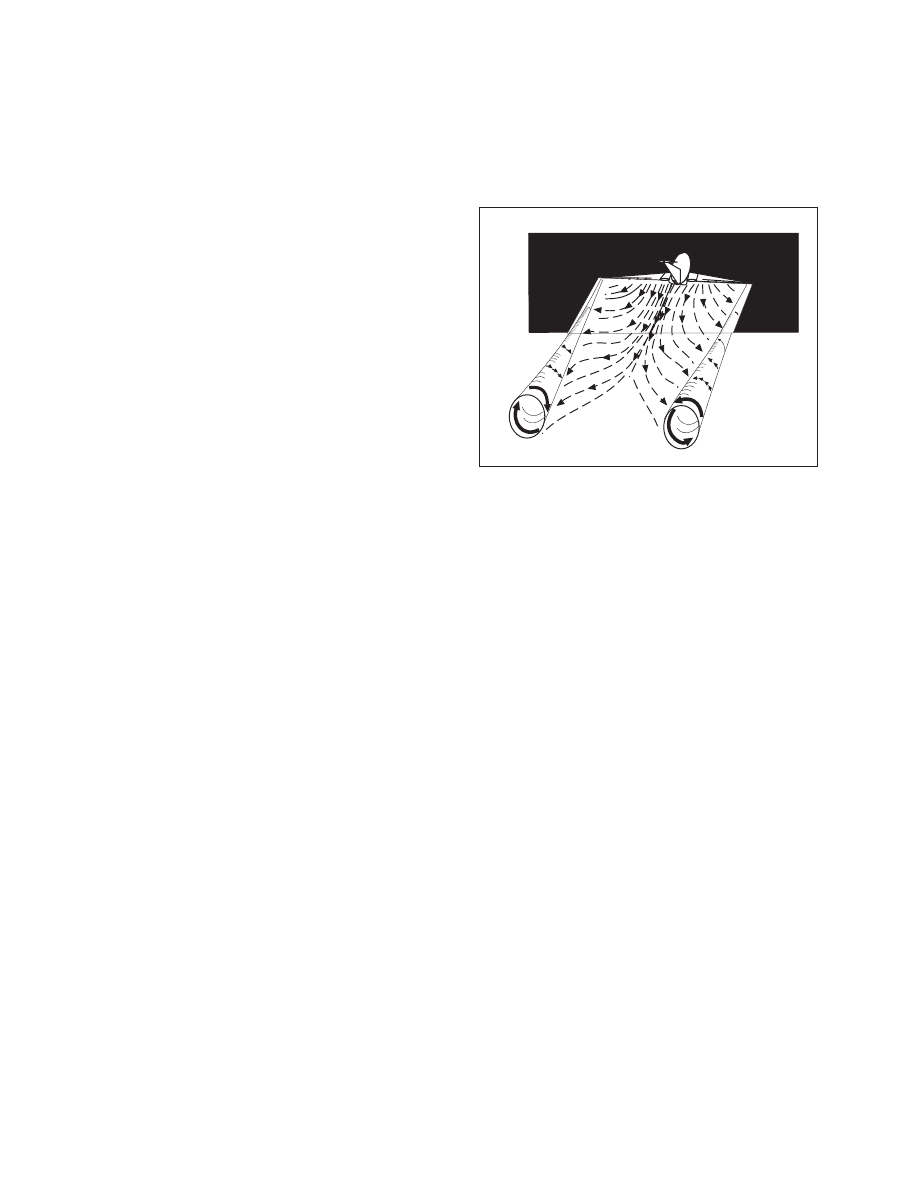
AIM
4/3/14
7−3−1
Wake Turbulence
Section 3. Wake Turbulence
7
−
3
−
1. General
a.
Every aircraft generates a wake while in flight.
Initially, when pilots encountered this wake in flight,
the disturbance was attributed to “prop wash.” It is
known, however, that this disturbance is caused by a
pair of counter−rotating vortices trailing from the
wing tips. The vortices from larger aircraft pose
problems to encountering aircraft. For instance, the
wake of these aircraft can impose rolling moments
exceeding the roll−control authority of the encounter-
ing aircraft. Further, turbulence generated within the
vortices can damage aircraft components and
equipment if encountered at close range. The pilot
must learn to envision the location of the vortex wake
generated by larger (transport category) aircraft and
adjust the flight path accordingly.
b.
During ground operations and during takeoff,
jet engine blast (thrust stream turbulence) can cause
damage and upsets if encountered at close range.
Exhaust velocity versus distance studies at various
thrust levels have shown a need for light aircraft to
maintain an adequate separation behind large turbojet
aircraft. Pilots of larger aircraft should be particularly
careful to consider the effects of their “jet blast” on
other aircraft, vehicles, and maintenance equipment
during ground operations.
7
−
3
−
2. Vortex Generation
Lift is generated by the creation of a pressure
differential over the wing surface. The lowest
pressure occurs over the upper wing surface and the
highest pressure under the wing. This pressure
differential triggers the roll up of the airflow aft of the
wing resulting in swirling air masses trailing
downstream of the wing tips. After the roll up is
completed, the wake consists of two counter−rotating
cylindrical vortices. (See FIG 7−3−1.) Most of the
energy is within a few feet of the center of each
vortex, but pilots should avoid a region within about
100 feet of the vortex core.
FIG 7
−3−1
Wake Vortex Generation
7
−
3
−
3. Vortex Strength
a.
The strength of the vortex is governed by the
weight, speed, and shape of the wing of the generating
aircraft. The vortex characteristics of any given
aircraft can also be changed by extension of flaps or
other wing configuring devices as well as by change
in speed. However, as the basic factor is weight, the
vortex strength increases proportionately. Peak
vortex tangential speeds exceeding 300 feet per
second have been recorded. The greatest vortex
strength occurs when the generating aircraft is
HEAVY, CLEAN, and SLOW.
b. Induced Roll
1.
In rare instances a wake encounter could
cause inflight structural damage of catastrophic
proportions. However, the usual hazard is associated
with induced rolling moments which can exceed the
roll−control authority of the encountering aircraft. In
flight experiments, aircraft have been intentionally
flown directly up trailing vortex cores of larger
aircraft. It was shown that the capability of an aircraft
to counteract the roll imposed by the wake vortex
primarily depends on the wingspan and counter−
control responsiveness of the encountering aircraft.